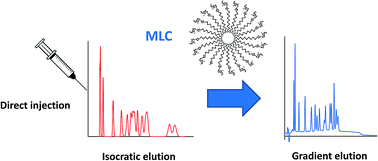Effect of sodium dodecyl sulphate and Brij-35 on the analysis of sulphonamides in physiological samples using direct injection and acetonitrile gradients
Abstract
Micellar liquid chromatography (MLC) is a reversed-phase (RP) mode, which often does not require gradient elution, since the peaks of mixtures of compounds within a large range of polarities appear more evenly distributed in the chromatograms of isocratic elution, giving rise to a “gradient effect”. However, the use of a gradient of organic solvent may still be convenient to shorten the total analysis time. This work compares the separation of 15 sulphonamides using conventional hydro-organic RPLC and MLC with the surfactants sodium dodecyl sulphate (SDS) and Brij-35, and both isocratic and gradient elution with acetonitrile. The observed behaviour is rationalized attending to the interactions in the different environments formed inside the chromatographic column, in the absence and presence of the two surfactants. The retention of alkylbenzenes is used to evaluate the relative polarity of the stationary phase under hydro-organic and micellar conditions. The most favourable gradients in MLC were used to analyse the sulphonamides in milk and urine samples, directly injected into the chromatograph. The addition of an initial step of a micellar mobile phase containing only SDS or Brij-35 facilitated the direct injection of the sample, which was followed by a gradient of acetonitrile to elute the most retained compounds.


 Please wait while we load your content...
Please wait while we load your content...